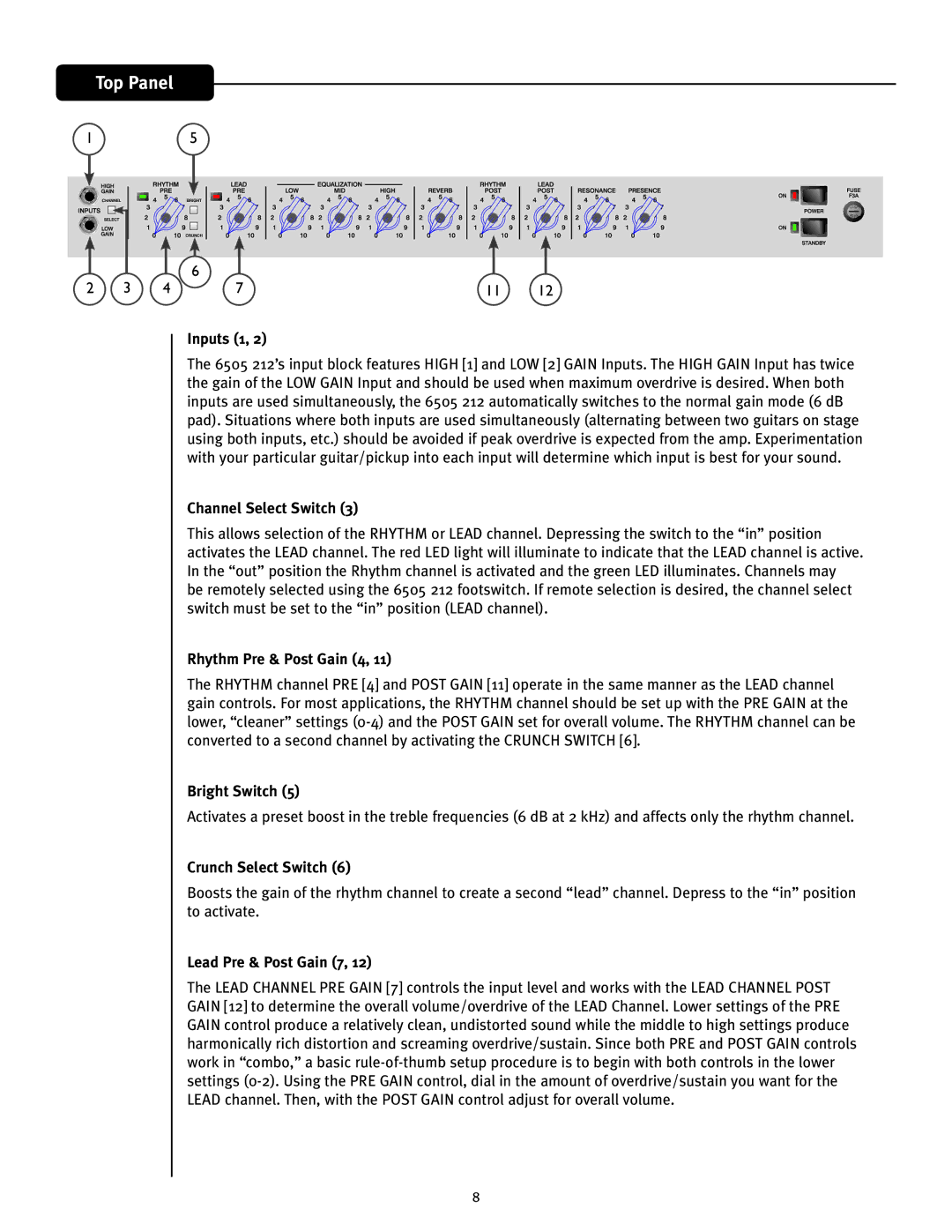6505 212 Combo specifications
The Peavey 6505 212 Combo is a powerful and versatile amplifier that has gained a reputation among guitarists for its high gain and robust tonal qualities. Originally designed with heavy metal in mind, the 6505 series has also found favor across various genres, thanks to its dynamic sound capabilities and reliability.One of the standout features of the 6505 212 Combo is its dual-channel design, which allows players to easily switch between clean and distorted sounds. Each channel has its own gain, bass, mid, treble, and reverb controls, providing extensive tonal shaping possibilities. The clean channel offers a warm, rich sound, while the lead channel delivers intense distortion and sustain, making it perfect for heavy riffs and solos.
At the heart of the Peavey 6505 212 Combo are its two 6L6 power tubes, which provide a full-bodied sound with excellent headroom. This complements the amp’s four 12AX7 preamp tubes, further enhancing its gain structure and tonal richness. This combination allows the amplifier to produce a broad range of sounds, from crystal-clear cleans to aggressive, saturated overdrive.
The cabinet houses two 12-inch speakers, which deliver a punchy, powerful output that can easily fill large venues. The speakers are designed to handle high volumes while maintaining clarity, ensuring that every note and nuance is heard, even in a full band setting. The combo design makes it convenient for transport while still delivering the full impedance performance expected from a standalone head and cabinet setup.
Another notable feature is the presence and resonance controls, enabling players to fine-tune their sound in the context of their band's mix. The built-in reverb adds an extra layer of depth and ambiance to the sound, making it suitable for various musical styles.
Additionally, the 6505 212 Combo is equipped with a buffered effects loop, allowing easy integration of pedals while maintaining the integrity of the signal. This design consideration ensures that users can experiment with their effects while still enjoying the amp’s natural character.
Overall, the Peavey 6505 212 Combo stands out for its reliability, tonal versatility, and powerful performance, making it a popular choice among professional musicians and hobbyists alike. With its intuitive controls and robust construction, it delivers an outstanding playing experience that can adapt to numerous musical contexts.

